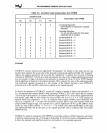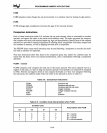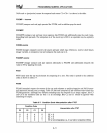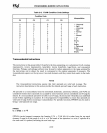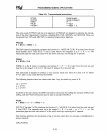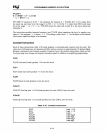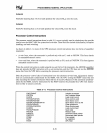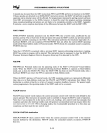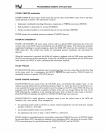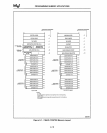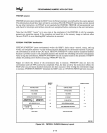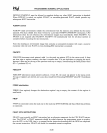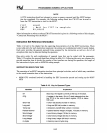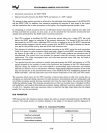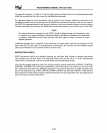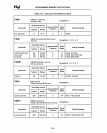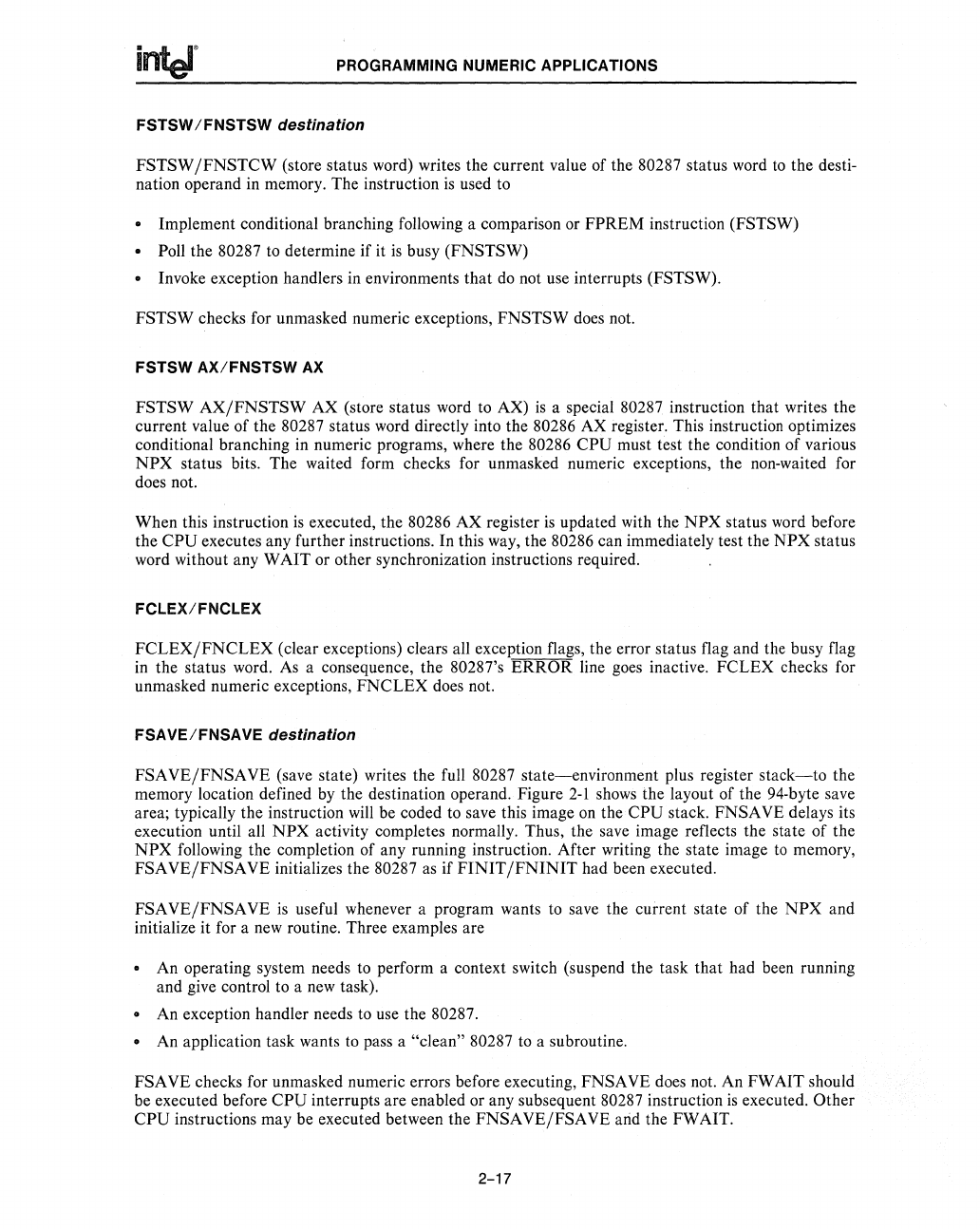
PROGRAMMING NUMERIC APPLICATIONS
FSTSW
IFNSTSW
destination
FSTSW
/FNSTCW
(store status word) writes the current value of the 80287 status word
to
the desti-
nation operand in memory. The instruction
is
used to
• Implement conditional branching following a comparison or FPREM instruction (FSTSW)
• Poll
the 80287
to
determine if it
is
busy (FNSTSW)
•
Invoke exception handlers in environments
that
do
not use interrupts (FSTSW).
FSTSW
checks for unmasked numeric exceptions,
FNSTSW
does not.
FSTSW
AX/FNSTSW
AX
FSTSW
AX/FNSTSW
AX (store status word
to
AX)
is
a special 80287 instruction that writes the
current value of the 80287 status word directly into the 80286 AX register. This instruction optimizes
conditional branching in numeric programs, where the 80286
CPU
must test the condition of various
NPX
status bits. The waited form checks for unmasked numeric exceptions, the non-waited for
does not.
When this instruction
is
executed, the 80286 AX register
is
updated with the
NPX
status word before
the
CPU
executes any further instructions. In this way, the 80286 can immediately test the
NPX
status
word without any WAIT or other synchronization instructions required.
FCLEX/FNCLEX
FCLEX/FNCLEX
(clear exceptions) clears all exception flags, the error status flag and the busy flag
in
the status word.
As
a consequence, the 80287's
ERROR
line goes inactive. FCLEX checks for
unmasked numeric exceptions,
FNCLEX
does not.
FSAVE/FNSAVE destination
FSAVE/FNSAVE
(save state) writes the full 80287
state-environment
plus register
stack-to
the
memory location defined by the destination operand. Figure
2-1
shows the layout of the 94-byte save
area; typically the instruction
will
be coded
to
save this image
on
the
CPU
stack.
FNSA
VE
delays its
execution until all
NPX
activity completes normally. Thus, the save image reflects the state of the
NPX
following the completion of any running instruction. After writing the state image
to
memory,
FSAVE/FNSAVE
initializes the 80287
as
if
FINIT
/FNINIT
had been executed.
FSAVE/FNSAVE
is
useful whenever a program wants to save the current state of the
NPX
and
initialize it for a new routine. Three examples are
• An operating system needs to perform a context switch (suspend the task that had been running
and give control to a new task).
• An exception handler needs to use the 80287.
• An application task wants
to
pass a "clean" 80287
to
a subroutine.
FSA VE checks for unmasked numeric errors before executing,
FNSA
VE does not. An
FW
AIT should
be executed before
CPU
interrupts are enabled or any subsequent 80287 instruction
is
executed. Other
CPU
instructions may be executed between the
FNSA
VE/FSA
VE and the FWAIT.
2-17



